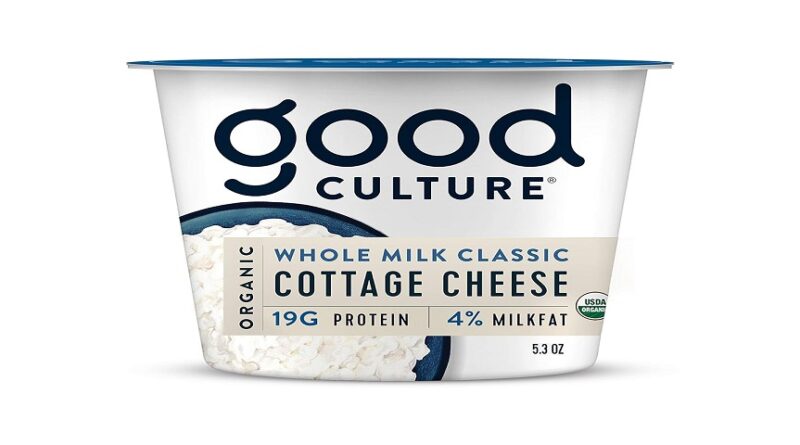Decoding the Cottage Cheese Nutrition Label
Cottage cheese, with its creamy texture and mild flavor, is a versatile dairy product that has earned a place in many diets. Whether you’re a fitness enthusiast, a health-conscious individual, or simply someone who enjoys a delicious snack, understanding the cottage cheese nutrition label is crucial to making informed dietary choices. This comprehensive guide will delve into the various aspects of cottage cheese nutrition, helping you decipher the label and make the most of this nutritious food.
Understanding the Basics
Before we dive into the specifics of the nutrition label, it’s important to understand what cottage cheese is and how it’s made. Cottage cheese is a fresh, unripened cheese made from milk. The milk is curdled, and the resulting curds are separated from the whey. These curds are then mixed with cream or milk, depending on the desired fat content, resulting in the final product.
Key Components of the Nutrition Label
The Cottage Cheese Nutrition Label provides valuable information about the product’s nutritional content. Here are the key components you’ll find:
- Serving Size: This indicates the recommended portion size for accurate calorie and nutrient calculations.
- Calories: This indicates the total energy content in one serving of cottage cheese.
- Macronutrients: These are the major nutrients that provide energy:
- Protein: Cottage cheese is an excellent source of protein, essential for building and repairing tissues.
- Fat: Cottage cheese comes in various fat percentages, including nonfat, low-fat, and full-fat. The fat content will affect the calorie count and overall nutritional profile.
- Carbohydrates: Cottage cheese contains carbohydrates in the form of lactose, a natural milk sugar.
- Micronutrients: These are vitamins and minerals essential for various bodily functions:
- Calcium: Cottage cheese is a good source of calcium, crucial for strong bones and teeth.
- Vitamin B12: This vitamin is important for nerve function and red blood cell production.
- Phosphorus: This mineral plays a role in bone health and energy metabolism.
- Selenium: This mineral acts as an antioxidant and supports thyroid function.
- Sodium: Cottage cheese can be relatively high in sodium, so it’s important to check the label, especially if you’re watching your sodium intake.
Decoding the Nutrition Facts
Now that you understand the key components of the nutrition label, let’s explore how to interpret the information.
- Calories: The calorie count per serving can vary depending on the fat content. Nonfat cottage cheese will have the lowest calorie count, while full-fat cottage cheese will have the highest.
- Protein: Cottage cheese is a protein powerhouse, with a significant amount of protein per serving. This makes it a great choice for those looking to increase their protein intake, such as athletes or people on weight loss journeys.
- Fat: The fat content in cottage cheese can range from 0% (nonfat) to 4% (full-fat). The type of fat can also vary, with some cottage cheese containing saturated fat. It’s important to consider your overall fat intake and choose a cottage cheese that aligns with your dietary goals.
- Carbohydrates: The carbohydrate content in cottage cheese is primarily due to lactose. People with lactose intolerance may need to choose lactose-free options or consume cottage cheese in moderation.
- Micronutrients: Cottage cheese is a good source of several essential micronutrients, including calcium, vitamin B12, phosphorus, and selenium. These nutrients play vital roles in maintaining overall health.
- Sodium: The sodium content in cottage cheese can vary between brands and types. If you’re watching your sodium intake, look for low-sodium or no-salt-added options.
Choosing the Right Cottage Cheese

With various options available, choosing the right cottage cheese can be overwhelming. Here are some factors to consider:
- Fat Content: Choose a fat percentage that aligns with your dietary needs and preferences.
- Sodium Content: Opt for low-sodium or no-salt-added options if you’re watching your sodium intake.
- Added Ingredients: Some cottage cheese varieties may contain added flavors, sweeteners, or thickeners. Check the ingredient list and choose options with minimal additives.
- Brand and Quality: Consider the brand’s reputation and quality when making your selection.
Health Benefits of Cottage Cheese
Cottage cheese offers several potential health benefits, thanks to its rich nutritional profile:
- Weight Management: The high protein content can promote satiety and help with weight management.
- Muscle Building: The protein in cottage cheese supports muscle growth and repair.
- Bone Health: The calcium content contributes to strong bones and may help prevent osteoporosis.
- Blood Sugar Control: The protein content can help regulate blood sugar levels.
Incorporating Cottage Cheese into Your Diet
Cottage cheese is a versatile food that can be enjoyed in various ways:
- Snack: Enjoy it plain or with fruit, vegetables, or nuts.
- Meal: Add it to salads, sandwiches, or wraps.
- Ingredient: Use it in dips, sauces, or baked goods.
Conclusion
Understanding the cottage cheese nutrition label empowers you to make informed choices about your diet. By paying attention to the key components and considering your individual needs and preferences, you can enjoy the health benefits of cottage cheese as part of a balanced diet.



